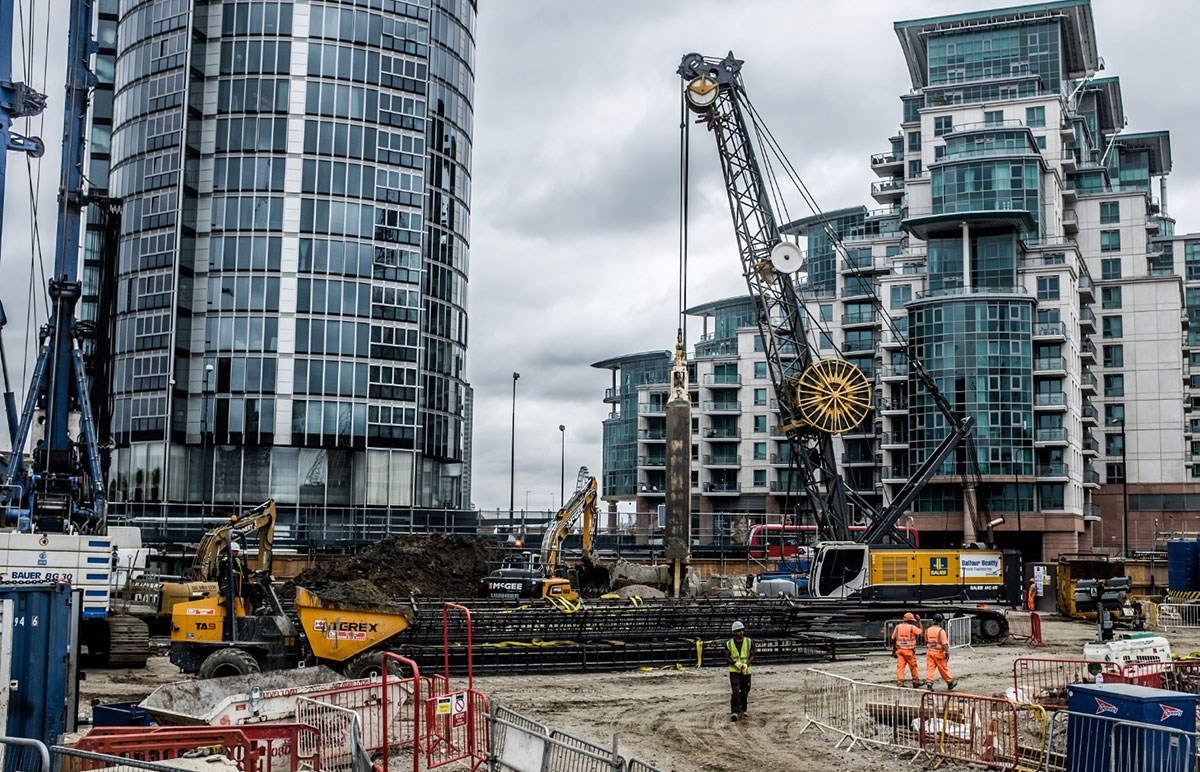See This Report about Geotheta
See This Report about Geotheta
Blog Article
The smart Trick of Geotheta That Nobody is Discussing
Table of ContentsTop Guidelines Of Geotheta10 Easy Facts About Geotheta DescribedGeotheta Things To Know Before You Get ThisNot known Facts About Geotheta
They collaborate with civil designers, architectural engineers, designers, and other specialists to incorporate geotechnical factors to consider into the overall task design and building process. This calls for reliable team effort, sychronisation, and communication to guarantee that the geotechnical aspects align with the task goals and meet governing needs.Mining & Products Design: Principles of boring, penetration prices, and aspects affecting the selection of exploration approach. Attributes of explosives, firing systems and blast patterns. Blowing up strategies in surface and underground operations. Special blowing up methods at excavation perimeters. Resonance and noise control. Mechanical and continuous strategies to fragmentation, including longwall shearing and fullface boring.
Modelling of fragment and bit dimension distributions; comminution as a transfer feature. Comminution technology: squashing, grinding, dimension classification. Integrated evaluation of fragmentation and comminution procedures. Used by: Mining & Products Engineering.
The Only Guide for Geotheta
Bachelor's level programs in civil, geotechnical, geological, and ecological engineering commonly last four years and include general education programs in English, social scientific research, and the liberal arts, in addition to training courses in innovative mathematics, structural geology, and liquid mineralogy. (https://telegra.ph/Why-Geotheta-is-Your-Go-To-for-Geotechnical-Engineers-in-South-Africa-08-02)
Geotechnical engineering entails the analysis of the dirt and rock problems at a particular website, and their implications for the advancement of that site. As the majority of frameworks depend on the ground for assistance, it is without surprise that an in-depth understanding of the ground conditions, and the viability of foundation systems, are vital to the long-term stability and performance of the structure or framework.
Specialising in the examination of geological developments and ground behaviour, geotechnical engineers carry out clinical examinations and screening to recognize the impact these geological formations may have on the style and construction of building, civil and facilities jobs. This know-how is crucial for the style and building of buildings, roads, tunnels, dams, bridges, and water and sewage systems.
The geotechnical team at Douglas Allies regularly speak with designers, layout engineers, designers, and home builders to make suggestions on style and development proposals to ensure that the built frameworks are accordingly created for the ground conditions. The design of footing systems needs to take into consideration the weight of the framework, the capability of the ground to sustain that weight together with movement resistances and efficient construction.
The Main Principles Of Geotheta
This task is significantly streamlined by the use our Douglas Map geospatial system which makes this info readily accessible in a very easy to use internet internet browser interface. A geotechnical designer will guide the drilling of boreholes and test pits to accumulate soil and other examples, and also analyze surface attributes and ground exposures to develop a geotechnical model of the subsurface problems.
Depending upon the project type and ground problems came across, laboratory testing might to name a few things evaluate toughness, compressibility, reactivity and/or permeability of dirt and rock examples. Hereafter information is collected and collected, the results are made use of for a geotechnical model of the site, which is typically provided as areas throughout the website.

A geotechnical examination by nature can just assess the ground conditions at the places drilled or dug deep into. All-natural variants in dirt and rock problems can take place throughout a website and in between examination areas. It is for that reason great method that the geotechnical designer be maintained throughout building and construction of the task to provide on-site verification that the ground conditions run into are consistent with the expectations and guidance supplied in the these details geotechnical investigation report.
Geotheta Fundamentals Explained
Geotechnical designers utilize their comprehensive understanding of soil and rock to assess threat and fix problems on varied facilities projectsGeotechnical engineering is a specialist branch of civil design which checks out the behavior of planet products and the application of soil and rock mechanics. Geo Tech Engineering. As a geotechnical engineer, you will certainly analyze the physical, mechanical and chemical residential or commercial properties of soil and rock in order to design structures, keeping frameworks and earthworks
Geotechnical engineering is closely linked to and overlaps with, both design geology and ground engineering - https://www.dreamstime.com/ianhammond2191_info. It's possible to specialise in geotechnics or work for a geotechnical company but be recognized as an engineering geologist or a ground engineer. As a geotechnical engineer, you'll need to: build and keep connections with clients and various other experts included in the site, throughout each projectmaintain security standards on website bear in mind price ramifications when you make recommendationsstudy geological maps and airborne pictures from a variety of sources and from various time periodsexamine building plans to see exactly how possible they are based upon your understanding of the siteinvestigate dangers or geological hazards for the sitesearch for eco sensitive attributes, such as land fill begin to create accurate and expository ground modelsplan field investigationsdrill and evaluate samples of bedrock, dirt, groundwater and additional materials manage various other professionals on sitesolve technological issues as they develop, such as unforeseen structures at drill sitesmonitor problems during and after building and construction to make certain frameworks are stable in the brief and long termadding information gathered on website to your first researchcreating geotechnical computations, illustrations, and two or three-dimensional computer designs interpreting the datamaking suggestions about the suggested usage of the site

Report this page